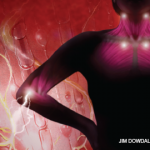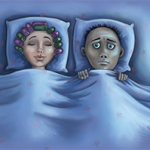Support for Rheumatology World Cup
On the idea of a World Cup for Rheumatology Research (“Competition on Another Pitch,” October 2010, p. 8)—robust competition, opportunity for the underdog to prevail, winner take all—count us in! In this age of cutbacks, economic downturns, and global malaise, we need a rallying cry. We need that entrepreneurial spirit and competition among the best and brightest.
And who can make this happen? We can. All of us, from the ACR, to EULAR, to advocacy groups, can band together to create a model program for early investigators who have that drive, motivation, and courage to tackle a huge need with that underdog will—and with the support of all of us together, how can they not succeed?
In thinking of teams and competition and winning, we should look at this as our call to action for the next decade. We may be wearing different jerseys, but we’re certainly not on opposing teams, and together we can take the responsibility that is ours to be the most appealing, exciting field to play on.
Lupus Foundation of America, Inc.
Washington, D.C.
Overlooked Cause of CPK Elevation
Regarding the article “For Myopathy, Basic Diagnostic Rules Hold” (November 2010, p. 57), in response to this excellent review and discussion of CPK [creatine phosphokinase] elevations, I’d like to point out that one obscure cause often overlooked is obstructive sleep apnea (OSA). In the article by Lentini et al in Chest (2006; 129;88-94) the authors have shown a strong relationship of mild to moderate CPK elevation and the severity of the OSA. The more severe the sleep apnea and the arterial oxygen abnormalities, the higher the CPK.
Treatment with CPAP often normalizes these CPK elevations. The mechanism suggested by Lentini et al for elevation of CPK in OSA patients is hyperactivation of the upper airway dilation muscles to maintain patency of the upper airways. There may also be increased activity in the inspiratory muscles of the diaphragm and hypoxia induced muscle stress.
In our multispecialty practice of rheumatologists and pulmonologists with sleep expertise, this has been useful for patients with elevated CPKs, shoulder and arm pain, and difficulty raising the arms due to rotator cuff and cervical disease, and in patients with lumbar spinal stenosis with weakness and elevated CPKs. Those whom we have found have OSA and have treated often have their CPKs come down to normal, therefore avoiding a further work-up.


